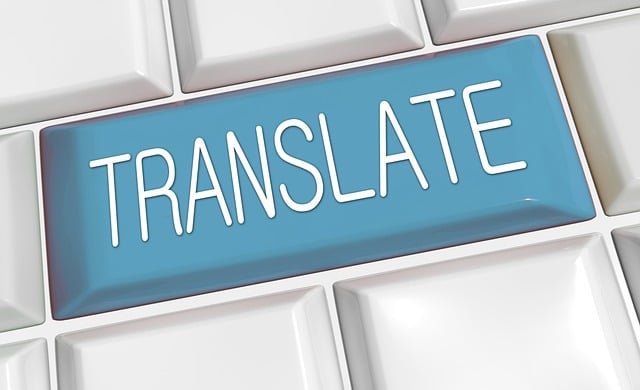
Cultural nuances require translators to go beyond literal translations, embracing sensitivity and knowledge for accurate, bias-free communication. Professional services use peer review and diverse networks for quality assurance. This meticulous approach preserves source culture while translating official documents, avoiding misinterpretations. Advanced techniques and deep cultural understanding are crucial for overcoming biases in legal and literary translations. Inclusive translations align with target audience values, customs, and diversity, using software to minimize biases. Contact us for globalized website strategies, exploring methods for enhanced translation projects.
Overcoming cultural biases during translation is a complex yet crucial task for accurate communication across languages. This article guides you through the intricacies of navigating cultural nuances, identifying biases in source texts, and implementing strategies for bias-free renderings. We explore essential steps like understanding cultural context, ensuring inclusivity, and maintaining sensitivity in the target language. By delving into these topics, translators can deliver messages that resonate authentically with diverse audiences. Learn how to translate effectively while preserving the intended meaning and cultural intent.
- Understanding Cultural Nuances in Translation
- Identifying Biases in Source Text
- Strategies for Accurate, Bias-Free Rendering
- Ensuring Inclusivity and Sensitivity in Target Language
Understanding Cultural Nuances in Translation

Understanding cultural nuances is an indispensable aspect of translation that goes beyond mere word-for-word substitution. Translators must grasp the subtleties and context within a culture to convey meaning accurately, especially when translating scientific texts or technical documents. Each language carries its own set of idioms, metaphors, and cultural references that can significantly impact the intended message. For instance, what is considered polite in one culture might be offensive in another. Therefore, a skilled translator should possess cultural sensitivity and knowledge to navigate these intricacies effectively.
This process involves delving into local customs, traditions, and even humor specific to each target language community. It’s not just about translating languages; it’s about bridging cultural gaps. Professional translation services often rely on volunteer translator networks who bring diverse linguistic skills and cultural insights to the table. Moreover, utilizing these networks allows for quality assurance through peer review, enhancing precision in technical translations. So, when you find us at proofreading and editing, rest assured we’re not just translating words; we’re fostering understanding across cultures.
Identifying Biases in Source Text

When preparing to translate any text, it’s crucial to scrutinize the source material for signs of cultural biases inherent within. The translate process isn’t merely about exchanging words from one language to another; it involves conveying nuances, idioms, and cultural references accurately. These subtle elements can significantly impact the meaning and intent behind a piece of writing. Readers rely on translators to navigate these complexities, ensuring that the translated work resonates with them culturally, even if it originated in a different context.
One effective strategy for identifying biases is creating flashcards for vocabulary. By breaking down key terms and exploring their usage within the source text, translators can uncover underlying assumptions or stereotypes. Additionally, when translating official documents or legal materials that require official document legalization, paying close attention to cultural nuances is paramount. This meticulous approach helps prevent misinterpretations that could lead to unintended consequences, especially in texts with significant social or legal implications. To foster accurate translations and maintain a nuanced understanding of the source culture, consider visiting us at poetic license in translation anytime.
Strategies for Accurate, Bias-Free Rendering

Overcoming cultural biases during translation requires strategic approaches and advanced translation techniques to ensure accuracy and fairness. Translators must first thoroughly understand both the source culture and the target language, enabling them to capture nuances and idiomatic expressions without imposing their own cultural perspectives. This involves extensive research, cross-cultural training, and continuous learning about the social, political, and economic contexts of the involved languages.
Additionally, distinguishing between oral vs. written translations is vital. Verbal communication often contains unspoken cues and contextual information that are challenging to convey in writing. Legal document interpretation, for instance, necessitates a deep understanding of legal terminologies and cultural sensitivities to maintain the original intent and meaning. By employing these strategies, professional human translator skills can be leveraged to create bias-free translations, making them accessible and meaningful across diverse cultures. Visit us at [human translator skills translating literature anytime] for expert assistance in navigating these complexities.
Ensuring Inclusivity and Sensitivity in Target Language

Ensuring that translations are inclusive and sensitive requires a deep understanding of the target culture and language nuances. It’s not just about translating words; it’s about conveying meaning while respecting and reflecting the values, customs, and diversity of the intended audience.
For instance, when localizing content for website globalization, maintaining style consistency in translation is crucial. Using appropriate terminology, idiomatic expressions, and cultural references that resonate with the target market demonstrates respect for their language and helps foster a sense of belonging. Translation memory software can be a powerful tool here, ensuring consistent use of terms across projects and minimizing biases by providing a bank of reliable, contextually relevant translations. Whether opting for simultaneous or consecutive translation methods, keeping an eye on cultural sensitivity is paramount. Even traditional flashcards for vocabulary building can be adapted to include cultural insights, ensuring that new words are not just memorized but understood within their appropriate contexts and connotations. Give us a call at language-specific marketing strategies translation for website globalization to discuss how these approaches can enhance your projects.
Overcoming cultural biases during translation is essential for creating accurate and inclusive content that resonates with global audiences. By understanding cultural nuances, identifying biases in source texts, employing strategies for bias-free rendering, and ensuring sensitivity in the target language, translators can deliver messages that are both precise and culturally relevant. This approach not only enhances communication but also fosters cross-cultural appreciation and understanding, making translation a powerful tool for bridging global divides.






